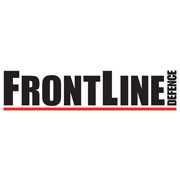COVID-19 and Impact on Funding for the Canadian Armed Forces
With the current global pandemic, the Federal government has been amassing hundreds of billions of dollars in debt by injecting liquidity into the Canadian economy through payments to newly unemployed Canadians, and through support to various industries.
After the COVID-19 pandemic is over, the government will be looking for areas to reduce expenditure, and the defence department has been a frequent target for budget cuts in time of austerity.
This is because, after legislated expenditure items, such as employment insurance and transfers to provinces, the Department of National Defence (DND) represents the largest discretionary spending amount.
The history of defence resource management in this country has been dominated by a constant struggle to renew both core military capabilities and personnel strengths. Cutting defence funding in the past has involved reducing military personnel numbers, disposing of equipment, and closing bases.
Given the complex and integrated nature of the trinity of Personnel, Operations & Maintenance, and Capital, both absorptive and divestment capabilities are limited in the near-term.
The long-term impact of diminished funding levels is that future defence capabilities will be reduced. In periods of future crises or conflicts, the growth of the Canadian Armed Forces would take years to achieve.
In 1963, the Ad Hoc Committee on Defence Policy perceptively understood the difference between annual defence budgets and the impact of shifts in long-term funding on capabilities. This was summarized in the following manner:
Military plans and programs involve substantial periods of time and are concerned with operational capabilities that are expressed in terms of forces, weapons, facilities and states of readiness.
Defence budgets, on the other hand, relate to a single year and are expressed in terms of money. There is, therefore, an important difference in time scale and language.
In 2020, this relationship between decision timeframes and annual defence budgets remains unchanged, and needs to be understood when the government considers any potential reductions.
The Department of National Defence is distinct, due to its large numbers of public servants and military personnel, the billions of dollars spent each year on technology-intensive weapons systems, training facilities and base infrastructure, as well as the substantial maintenance and operating costs of it all.
Yet the most important defence consideration during times of divestment, is the range of different timeframes that occur – in personnel, operations and maintenance, capital equipment acquisition – and the impact that periods of austerity can have on long-term capability outputs. Each are different.
Long-term planning is a process that considers prospective future security environments, and then shapes a force development plan that best aligns the organization to that environment over time, given a number of financial and other constraints.
Programs to procure weapon systems often run for a decade or more before those systems are fielded, and other policy decisions have long-term implications; thus, decisions made today can influence the size and composition of the nation’s armed forces for many years to come.
Planning occurs across a broad spectrum of military capabilities, and brings inherent complexity. Decisions made today on large capital equipment procurement programmes will significantly influence future capabilities and the effectiveness with which military forces can operate in a future security environment.
Capital equipment planning in defence is an iterative, complex, multi-stage process. Complexity arises from the requirement to simultaneously develop and maintain capital equipment projects across the spectrum of the military service environments from the early options analysis to capability delivery and through in-service equipment integration. Long-term planning may be an institutional process, but foremost it is a highly political endeavor.
Managing expectations in defence is already a constant challenge, as the organization has to simultaneously implement planned initiatives or programs while engaging in ongoing activities and deliberately preparing for the future.
Consequently, management of defence funding during periods of austerity requires a distinct and measured approach, because of the particular context in which defence leaders make decisions.
Politics in Canada is regional. Therefore, in a Parliamentary democracy such as Canada, defence is rarely a ballot issue. Not only is defence quite absent from political discussions, the length of election cycles constitutes an additional barrier to long-term defence planning.
Choices will have to be made, and this may disrupt an institutional consensus that has developed over time. The conundrum is that political election cycles have traditionally been four to five years, whereas the focus of military leaders is up to three decades in the future.
In essence, stagnant or declining budgets, out of necessity, drive both the government and defence leadership to make strategic choices in an increasingly hostile world.
A lot has changed since the Canadian Armed Forces departed Afghanistan in 2014. Indeed, nations that try to build peace internationally today face difficult realities.
The COVID-19 pandemic has considerably accelerated recent shifts in the international security environment that may require involvement from the Canadian military in the future and for which it will need the proper capabilities and structure.
In an unsettled global security environment, the Canadian defence establishment needs to be well-suited and ready to respond to diverse challenges – and able to deliver the output required. Nevertheless, cuts in defence are likely, and this will have long-term consequences on military capabilities.
Ross Fetterly is a retired Royal Canadian Air Force colonel and fellow at the Canadian Global Affairs Institute.
This article was published by our partner Front Line Defence on June 2, 2020.

